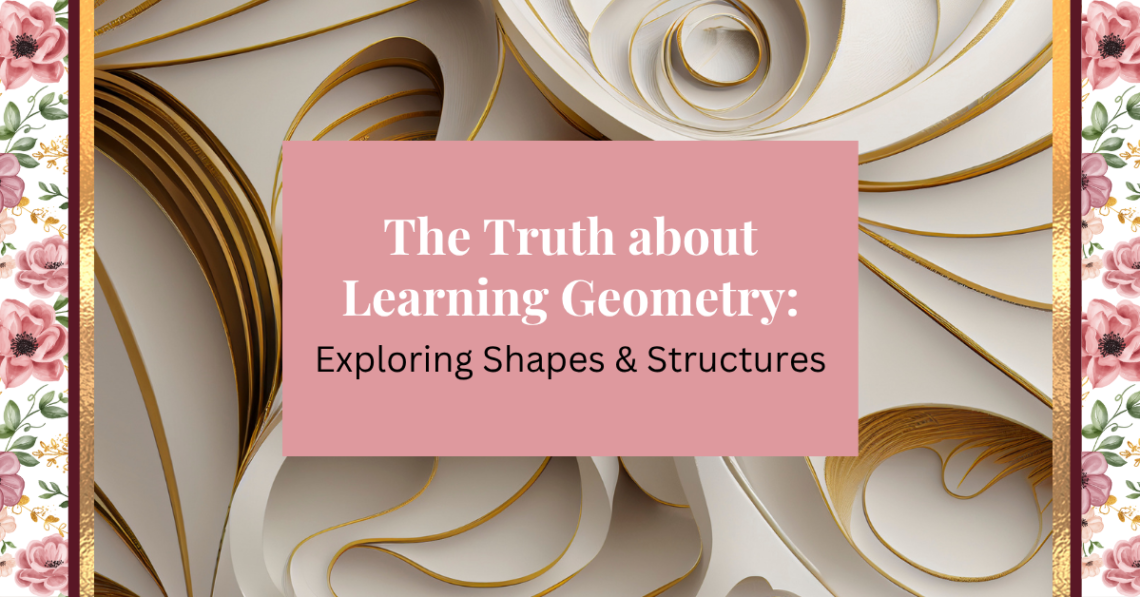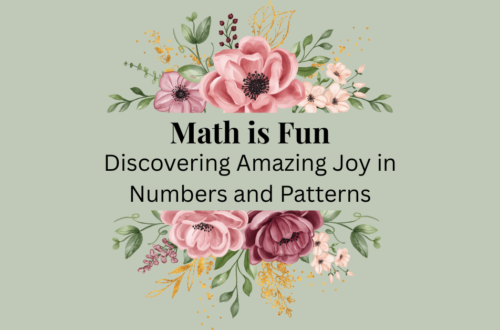Geometry is a branch of mathematics that deals with shapes, sizes, and the properties of space. Often introduced in middle or high school, it can feel like a different world for many students compared to algebra or arithmetic. However, geometry plays a crucial role in understanding the world around us and is a subject with wide-reaching applications. In this post, we’ll explore the truth about learning geometry, its practical applications, and why it’s a vital part of the math curriculum.
1. Geometry Is All Around Us
One of the first truths about geometry is that it’s all around us. Whether we’re aware of it or not, shapes and structures shape our daily lives. From the simple circles of wheels to the intricate angles in the buildings we live and work in, geometry provides the foundation for understanding and creating the spaces around us.
- In Nature: Geometry is present in nature in the shapes of flowers, the symmetry of snowflakes, and the structure of crystals. The patterns found in nature, such as spirals and hexagons, are all geometric concepts in action.
- In Architecture: Buildings, bridges, and even furniture are designed using geometry. Understanding the properties of different shapes, like triangles or circles, helps architects create stable and aesthetically pleasing structures.
- In Art: Many artists use geometric principles to create balanced compositions. Whether it’s a painting with geometric shapes or sculptures with symmetry, geometry has played a significant role in artistic expression throughout history.
2. Geometry Develops Problem-Solving Skills
While geometry may seem like a series of memorized formulas and theorems, it’s actually a subject that promotes critical thinking and problem-solving skills. Learning how to approach geometric problems teaches students how to think logically, break down complex problems, and develop step-by-step solutions.
- Proofs and Theorems: One of the key components of geometry is proving statements using logical steps. These proofs require students to build upon what they know and apply previous knowledge in creative ways. This process is a great exercise in logical reasoning and structured thinking.
- Critical Thinking: Geometry helps students develop their critical thinking skills by encouraging them to visualize shapes and structures and understand their properties. For example, figuring out how to calculate the area of a triangle or determine the volume of a solid object requires students to think critically and apply geometric principles.
3. Geometry is Essential in STEM Fields
Geometry is not only useful in everyday life; it’s also a critical component of fields like engineering, physics, architecture, computer science, and many others. In fact, it’s a cornerstone of science, technology, engineering, and mathematics (STEM) education.
- Engineering and Design: Engineers use geometry to design everything from buildings and bridges to car parts and machines. They need to understand how shapes interact with forces, how to calculate dimensions, and how to ensure stability.
- Physics: In physics, geometry helps explain the relationship between physical objects and the forces acting on them. Concepts like vectors, motion, and energy require geometric principles to be properly understood and applied.
- Computer Science: Computer graphics and 3D modeling rely heavily on geometry. From creating virtual environments in video games to rendering complex 3D models, geometry plays a crucial role in the development of digital worlds and simulations.
4. The Joy of Understanding Shapes and Their Properties
Learning about shapes and structures doesn’t have to be dull. In fact, discovering the beauty and symmetry of geometric objects can be quite exciting. From simple shapes like squares and circles to more complex polygons and polyhedra, each shape has its own set of properties that make it unique.
- Symmetry and Proportions: Geometry helps us explore concepts like symmetry, congruence, and similarity. Understanding these properties can enhance our appreciation of nature and art and is essential for building designs that are both functional and beautiful.
- Circle Geometry: Circles are one of the most fascinating shapes in geometry, and their properties (like radius, diameter, circumference, and area) have been studied for thousands of years. Understanding the relationships between these properties can help solve real-world problems, such as calculating the area of a circular garden or the volume of a round swimming pool.
- Polygons and Polyhedra: Learning about polygons (shapes with multiple sides) and polyhedra (3D shapes with flat faces) introduces students to complex relationships between angles, sides, and vertices. These shapes are key to understanding more advanced geometric topics and have practical applications in fields like architecture and engineering.
5. Geometry Enhances Spatial Awareness
One of the most important benefits of learning geometry is that it improves spatial awareness — the ability to understand and mentally manipulate objects in space. This skill is useful in everyday tasks like navigating your surroundings, packing a car, or arranging furniture, and is especially important in professions like design, architecture, and engineering.
- 3D Visualization: Geometry helps students develop the ability to visualize three-dimensional objects in their mind. This skill is essential for understanding how objects will fit together, how they will move in space, and how they relate to each other. For instance, when designing a building, architects need to be able to visualize how different components of the structure will fit together before construction begins.
- Navigating Spaces: From reading maps to driving a car, geometry helps us navigate spaces efficiently. Understanding distances, angles, and directions enables us to move from one place to another with ease, whether it’s through a city or across a country.
6. Geometry Is Fun and Rewarding
While geometry can be challenging, it also offers plenty of rewards. There’s a sense of accomplishment when you solve a geometric problem, and a certain joy in realizing the importance of the shapes and structures you encounter every day.
- Interactive Learning: Geometry offers numerous hands-on activities that can make learning fun. Whether it’s drawing geometric shapes, building 3D models, or using geometry software to explore virtual spaces, there are many ways to engage with the subject.
- Real-World Connection: As you begin to see geometry in action — from the angles in a roof to the curves in a car’s body — you gain a deeper appreciation for how it shapes the world around you. This real-world connection makes learning geometry both relevant and exciting.
Conclusion
The truth about learning geometry is that it’s far more than just a set of formulas and theorems — it’s a tool that helps us understand the world in a new and meaningful way. Geometry fosters critical thinking, enhances spatial awareness, and is essential in many fields, including STEM, art, and design. By exploring shapes and structures, you gain a deeper appreciation for both the beauty and functionality of the world around you. So the next time you encounter a geometric shape, remember: there’s much more to it than meets the eye!
What’s your favorite aspect of geometry? Share your thoughts and experiences in the comments below!





